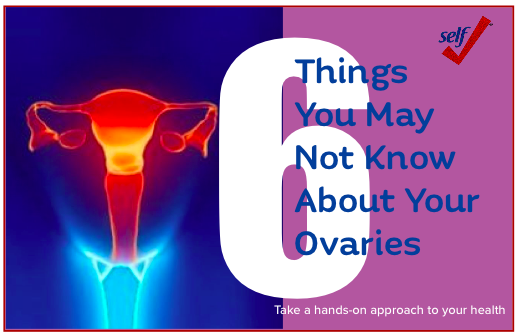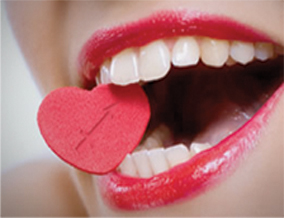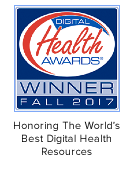Keeping Your HEART Healthy
Keeping Your Heart Healthy
Why Do I Need To Get My Heart Checed? 1
Your heart supplies energy to every organ in your body.
Heart diseases threaten your overall well-being.
When Should I Start Worrying About My Heart?1
Luckily your health professionals start doing that the minute
you are born and continue with every visit;
you should discuss diet, exercise and smoking habits with
your health professionals as well as family history.
And while there are no self-checs for heart disease, there are
things you can do to improve your heart health.
What Is My Risk For Heart Disease And Stroke? 2
Use the Heart Disease Risk Calculator Tool on this page. to help determine if you have any risk factors. ?????
What Is Heart Disease? 3
Heart disease is an umbrella term that covers many types of heart conditions.
What Are The Signs And Symptoms of Heart Disease? 4
Don’t miss this section. It could help save your life.
How Can I Reduce My Chances Of Getting Heart Disease? 5
Six healthy habits that can help prevent heart disease.
Your Heart Disease Risk Tool
Click theThe Heart Disease Calculator Tool from The Siteman Cancer Center to help you determine what your risks may be.
According to the National Heart, Lung & Blood Institute, the following are risk factors for heart disease and stroke, often called cardiovascular disease:
Risks for heart disease:
- High blood pressure
- High cholesterol
- Diabetes and pre-diabetes
- Smoking, including being exposed to secondhand smoke
- Being overweight or obese: calculate your Body Mass Index (BMI) to see if you should lose a few pounds
- Not exercising
- Having a family history of early heart disease
- Having a history of preeclampsia during pregnancy
- Not eating a healthy diet
- Age, typically women 55 or older for, younger for men. Unfortunately there are exceptions.
Additional Risk Factors For A Stroke:
- Having a heart disease such as coronary heart disease and atrial fibrillation or having a brain condition, such as an aneurysm
- Younger ages, more men than women have strokes. However, women are more likely to die from strokes.
- Women who take birth control pills are at slightly higher risk of stroke.
- Your Race. Strokes occur more often in Black, Alaska Native, and American Indian adults than in White, Hispanic, or Asian American adults.
- Personal or family history of stroke or TIA, thought of as a mini- or pre-stroke
- Substance use, including cocaine and amphetamines
- Stress and depression
What Heart Disease Is 3
Heart disease is the number one killer of men and women in the U.S. It’s also an umbrella term for the following heart conditions:
Coronary Heart Diseases (CHD)
The most dangerous and most common is coronary heart disease (CHD), called a circulatory disorder because it involves the circulation system of arteries and other blood vessels.
There are three major types of CHD, depending on where the plaque is found:
Coronary artery disease: plaque lines arteries that supply blood to the heart; it’s the number one cause of heart attacks.
Peripheral artery disease: plaque lines arteries that supply blood to the arms and legs.
Carotid artery disease: plaque lines arteries that supply blood to the brain.
A heart attack can happen when arteries become so clogged that the flow of blood to the heart is reduced or stopped; the resulting lack of oxygen damages or kills the heart muscle.
Arrhythmias
An arrhythmia is an abnormal heart rhythm caused by a problem with the heart’s electrical system, the system that regulates the heartbeat.
Depending on the type of arrhythmia, you can develop a heart rate that’s too slow or too fast, one that may stay out of whack or come and go. Some types are life-threatening, while others may be more bothersome than dangerous.
The most common is atrial fibrillation (afib). Atrial fibrillation and atrial flutter can lead to the formation of blood clots in the heart. When dislodged, a blood clot can travel to the brain, block a vessel and cause a stroke.
Despite its name, not everyone with afib experiences symptoms until there’s a complication. A lack of energy is the most common symptom; a fast or irregular pulse, shortness of breath and heart palpitations are some of the others.
Click on the The Heart Rhythm Society’s online risk assessment to help you know if your risk of afib is high.
Resources: American Heart Association and NHLBI
The Signs And Symptoms of Heart Disease 4
About Angina, Heart Attack and Stroke
ANGINA
Your Body’s Early Warning System
Recognizing angina and getting treated early may prevent a heart attack. The more time that passes without treatment, the greater the damage to the heart.
In MEN, angina chest pain may feel like: (Columns side to side)
- Tightness
- Pressure
- Discomfort
It may occur:
- During physical activity
- When stressed
In WOMEN, angina chest pain may also include:
- Feeling out of breath
- Nausea
- Vomiting
- Gastric discomfort
- Sharp chest pain
If you or someone you know are experiencing any of the symptoms of angina, call 911 immediately.
HEART ATTACK
Every year about 720,000 Americans have a heart attack—two-thirds are a first heart attack, and one third are repeat heart attacks. Knowing the symptoms of a heart attack and getting immediate emergency treatment can limit or prevent heart muscle damage.
MEN: The five most common symptoms of a heart attack are: (SIDE BY SIDE)
- Chest pressure or pain
- Shortness of breath
- Pain or discomfort in the arms or shoulder
- Pain or discomfort in the jaw, neck or back
- Feeling weak, lightheaded or nauseous
WOMEN: The most commonly reported symptoms are:
- Unusual fatigue
- Sleep disturbance
- Shortness of breath
- Indigestion
If you or someone you know is experiencing symptoms of a heart attack, call 911 immediately. The faster people are treated for a heart attack, the better their chances of survival and good recovery.
STROKE
A stroke is like a heart attack that happens in the brain. To help you recognize the signs of stroke, Think F-A-S-T.
F: Facial signs of a stroke include drooping, weakness or numbness on just one side of the face. You may see an uneven smile.
A: Arm weakness or numbness on just one side of the body is another sign. Often if both arms are lifted, one will drift downward.
S: Speech is slurred or hard to understand or the person is unable to speak or accurately repeat a simple sentence. There is a lack of understanding about what’s going on.
T: Time is of the essence. If you see any of the above symptoms, call 911 even if the symptoms seem to go away. The affected person needs to get to the hospital FAST.
Additional signs :
- Inability to see or walk
- Dizziness
- Loss of balance
- Sudden severe headache with no known cause
- Inability to see or walk
- Dizziness
- Loss of balance
Resources: NHIBI and American Heart Association (AHA)
How To Reduce Your Chances Of Getting Heart Disease 5
Go ahead push our buttons to practice these 6 key healthy lifestyle habits:
Eat a healthy diet. Eat plenty of high-fiber fresh fruits and vegetables and whole grains. Choose fish as a protein source, and reduce full-fat dairy and red meat in your diet, foods that are high in saturated fat. Cut back on salt, especially in processed foods. Click our button for more information.
Get to a healthy weight. Being obese is linked to higher LDL (bad) cholesterol and triglyceride levels and to lower HDL (good) cholesterol as well as high blood pressure and diabetes. Being obese or even just overweight can increase heart disease risk. Eating healthier and eating less calories (even healthy ones) will help you shed excess pounds. To find out how to create a successful diet, click here.
Get regular exercise. Not exercising is linked to heart disease and can also impact a variety of general health risks all of which in turn raise heart disease risk: obesity, high blood pressure, high triglycerides, low HDL cholesterol and diabetes. Getting regular physical activity can lower all of these risk factors. click here. (make this push our button for more information) Should match same like information on on other sites.
Stop smoking. Tobacco can have as serious an effect on your heart as it does on your lungs, raising the risk of both heart disease and heart attack. For how to quit successfully, click here.
Drink less. Too much alcohol harms your heart in many ways. It raises blood pressure and triglycerides, a contributing factor in atherosclerosis. To find out about alcohol guidelines, click here.
Reduce stress. Stress can increase your risk of a heart attack and a stroke. Click here to find ways to relax.




